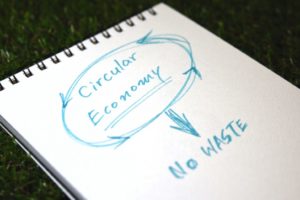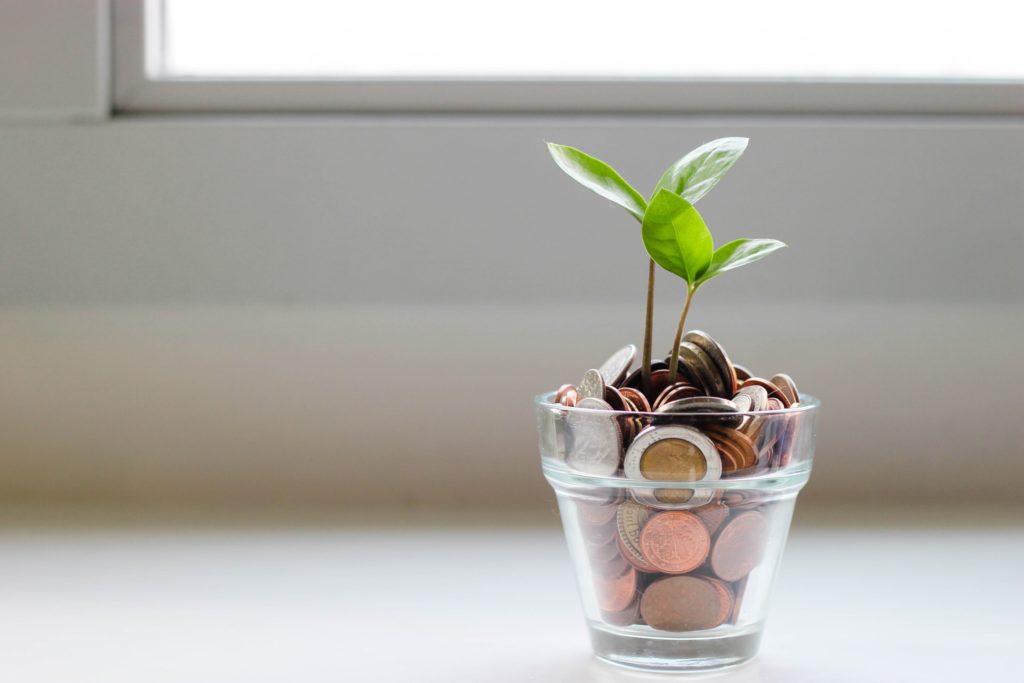Companies looking for more sustainable ways of doing business are nothing new, but there has been a substantial increase in recent years. From the smallest startups entering the market focused entirely on sustainable products and services, to the largest multinational businesses overhauling existing operations to embrace sustainability metrics, there’s a sea of change happening—and its waters are decidedly green. But what’s behind this latest push towards sustainable business and is it here to stay?

To help answer those questions we dive into:
- Why companies are choosing to go green
- How they are doing it
- What these sustainable programs look like within today’s most successful companies
Read on to learn more about how long-term growth and green business are walking hand-in-hand.
Why are companies going green?
There are several reasons that companies of all sizes are looking to go green, but one of the most significant is the rising consumer demand for more sustainable products. This is part of a broader wave of awareness around the environmental impact of consumerism and industrial production.
Consumer demand
Two notable examples of this shift in consumer attitude and the effects it’s having on business is the surge in concern around single-use plastics. In the US, for example, one 9-year-old boy is credited with beginning the movement that led to global bans on plastic straws with his grassroots “Be Straw Free” movement, exploding in popularity beyond anything he could have imagined.

In 2011, after noticing customers remove plastics straws from their drinks without using them, he spoke to local businesses about changing policy on how they were distributed. He suggested that, instead of automatically providing straws, restaurants should ask customers whether they wanted them. Local restaurants jumped at the chance, initially recognizing cost-savings and then, as the movement began to gather pace, reaped further benefits of being the first to take part in Milo Cress’s game-changing initiative.
Meanwhile, in the UK and across Europe, the critical and popular acclaim that followed the release of the BBC’s Blue Planet II, led directly to plastic bans around the world, with one study reporting that “88% of people who watched the program have since changed their behavior as a result.” These shifts in attitude have had significant impacts on businesses around the world—pushing some to adapt, some to fail, and others to emerge.
This fast-evolving consumer conscience has, in recent years, spread beyond traditional environmentalism, with an increasing portion of the population now pushing for more sustainable and ethical products for a variety of reasons. It may encapsulate motivations such as supporting local businesses or ensuring workers are paid a living wage in relation to the location in which products are manufactured.

Source: zerowaste
Perhaps most importantly for companies is that people are now willing to put their money where their mouth is, with one 2019 survey finding that “more than half of consumers said they would pay more for sustainable products designed to be reused or recycled”. The same study also found that from their sample, 72% of respondents reported buying more environmentally-friendly products than five years prior, and 81% expected to buy even more in the five years that would follow.
This pressure from consumers fueled by a new-found realization that spending habits have the power to make global change, alongside the financial and brand-image benefits of implementing more sustainable business practices, is delivering a win-win situation for everyone involved. Today, a perfect storm of sustainability-focused legislation is helping to maintain longevity while adding value for business striving to go green.
Government regulations
Consumer demand has been one catalyst for the development of sustainability legislation, in this case, driving single-use plastic bans in countries around the world. Additionally, top-down initiatives developed by governments and other national or international organizations are also viable reasons why companies are going green. From international climate accords to local council initiatives, there has been significant growth in green policies over the past several years.

The Paris Climate Agreement, one of the most notable examples of a top-down driver, asked all countries involved to reduce emissions and build resilience, which delivered an immediate impact. What’s more, unlike conventional environmentalism which has generally shied away from engaging businesses, this climate agreement recognized the private sector as “an integral part of the global solution to address climate change”.
Engaging companies with sustainability issues through legislation is also seen on a more local level, and new initiatives have been rolled out across the US with varying degrees of success. There are countless examples like New York’s plastic bag ban, New Jersey’s first steps into EPR for e-waste, and California’s Mandatory Commercial Organics Recycling program all impacting the way businesses operate on a daily basis and placing increasing responsibility on the shoulders of commercial businesses.
How are companies going green?
In the Paris Climate Agreement, there was a particular focus on green investment, with one business report noting that “There is a clear policy signal for businesses and investors across all jurisdictions to make low emission or emission-neutral investments, whether through financing projects or investing in new technologies.” This, alongside calls for organizations such as universities to divest from potentially damaging industries or companies, is changing the way business is financed at the outset.

Environmental, social, and governance (ESG) investment
This is most clearly seen in the rise of environmental, social, and governance investment, which involves taking these considerations into account in addition to more traditional investment criteria. This area of finance came out of Socially Responsible Investment (SRI), which looked at the ethics and morals of a company, but ESG takes it further by embedding these factors into the actual viability of an investment. The factors measured can include things like health and safety policies in factories; traceability and transparency in supply chains; worker rights; the diversity of the executive-level managers; and company response to climate change.
The term first came into existence in 2005, and as of 2018 accounted for nearly 25% of all professionally managed assets in the world, which is around $20 trillion worth. What’s more, green-focused finance means that a knock-on effect is seen across other sectors, creating a snowball effect leading to change.

Source: zerowaste.com
Zero waste for business
Outside of green finance, there has also been a boom in commercial zero waste initiatives. This means that businesses are embracing the zero-waste ethic, which aims for “The conservation of all resources by means of responsible production, consumption, reuse, and recovery of products, packaging, and materials without burning and with no discharges to land, water, or air that threaten the environment or human health.”
For companies, this means diverting more than 90% of their waste from landfills and incineration by measuring, monitoring, and managing waste more sustainably. This takes different forms depending on the type of business and industry but has proved a successful method for quantifying eco-initiatives and developing workable goals that engage consumers, employees, and other stakeholders across the board.
Circular economy
Another way in which companies are going green is by embracing the circular economy. As opposed to a linear economy, which follows a “take, make, use, dispose” model for resources, the circular economy keeps materials in use for as long as possible through production techniques, reuse, and sustainable waste management such as recycling.

Source: rts.com
Moving towards a circular economy will mean less pressure on natural resources; a reduction in the environmental impact of extracting them; a reduction in the energy needed to process materials and produce products; and much more. Additionally, there could be explicit benefits to the wider economy, with a circular economy predicted to increase competitiveness, boost economic growth, and create jobs.
It’s important to remember that these examples of how companies are going green are by no means the only pathways, and more importantly, are rarely independent of one another. For example, zero waste is often seen as inextricably linked to a circular economy, with green finance increasingly seen as a viable method to foot the bill for all of it and make up for shortfalls during transition periods.
Which companies are going green?
Here’s a couple of real-world examples of large-scale companies striving for greater sustainability.
Apple
Almost universally known, this tech giant’s stores, offices, and data centers are all powered by 100% renewable electricity. Additionally, Apple launched a zero-waste program in 2018 that led to “100% zero-waste certifications for all final assembly facilities across iPhone, iPad, Mac, Apple Watch, AirPods, and HomePod.”

Source: unilever.com.my
Unilever
With 242 factories in 67 countries around the world, and producing a huge range of products, Unilever managed to achieve its Zero Waste to Landfill goal in 2016 and has maintained it ever since. Additionally, they have pledged to only use 100% recyclable, reusable, or compostable packaging by 2025.

Source: kmai.com
Bank of Montreal
Looking toward green finance, the Bank of Montreal committed to “mobilize [CA]$400 billion for sustainable finance, increase support for small businesses and women entrepreneurs, and commit to zero barriers to inclusion” by 2025. Considered the largest single commitment to sustainable finance as of 2019, it shows just how much weight this movement is now gathering.
Going green versus starting sustainably
While companies are now looking for how to go green, it is worth noting that the biggest change may not be the companies switching to more sustainable alternatives, but the explosion in the number of companies that are founded on green or sustainable principles.
It is likely that as bottom-up, top-down, and internal pressure mounts for companies to go green, there will be greater changes and even further innovation. The future certainly looks to be moving towards more sustainable business practices, with the realization finally setting in that going green doesn’t mean compromising on growth.
For more information on sustainability and how RTS is working with businesses to deliver sustainable waste management, subscribe to the blog today. Additionally, speak to one of our TRUE Advisors to see how your business can become more sustainable.


